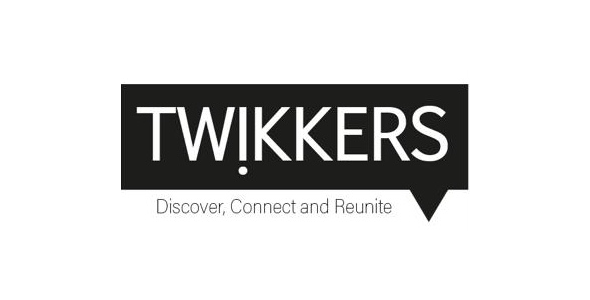Market Overview –
Market Research Future (MRFR) predicts the Neurovascular Devices Market to be worth more than USD 4.2 billion by 2030. MRFR also forecasts a 5.7% growth rate in the global market during the evaluation period (from 2022 to 2030).
The Neurovascular Devices Market encompasses medical devices used in the treatment of neurological conditions affecting blood vessels in the brain and spinal cord. These devices are crucial in addressing conditions such as aneurysms, arteriovenous malformations (AVMs), and ischemic strokes, which can have serious and potentially life-threatening consequences.
Key players in the neurovascular devices market include medical device manufacturers specializing in neurointerventional technology, hospitals, neurosurgical centers, and research institutions. These stakeholders collaborate to develop and commercialize a range of devices, including neurovascular stents, embolization coils, flow diverters, and clot retrieval devices, aimed at improving patient outcomes and reducing the risk of neurological complications.
The neurovascular devices market, particularly neurovascular stents, is witnessing significant growth. These devices play a crucial role in treating various neurological conditions such as aneurysms and strokes. Advancements in technology, coupled with rising incidences of neurological disorders, are driving market expansion. Additionally, increasing awareness and favorable reimbursement policies further boost market prospects.
Market Dynamics
The rapidly growing patient population base with respect to the target diseases across various countries can be attributed to the steadily increasing use of advanced neurovascular products. Increased technological advancement in the field of neurovascular devices also contributes significantly to the global market's growth potential.
Interventional treatments are in high demand for improved monitoring and diagnosis of neurological disorders, due to its excellent clinical effectiveness. One of the main reasons for the rapid adoption of interventional neurovascular devices by neurosurgeons and medical professionals in the United Kingdom, France, the United States, Japan, and Germany due to the same aspect.
Increased demand for minimally invasive neurosurgical procedures, increasing neurosurgeon awareness of minimally invasive procedures, and an increase in the number of clinical studies in the field of neurovascular therapy could provide lucrative opportunities to key competitors in the coming years.
In the foreseeable future, high-cost neurovascular devices and unfavorable reimbursement scenarios in a few countries could limit market growth. Following the COVID-19 outbreak, the medical and healthcare industries have worked hard to keep their operations running while the lockout remains in place. The neurovascular devices industry has been preparing to deal with the issues that have arisen as a result of the SARS-CoV-2 pandemic, including economic downturn, slashed demand for these devices, and massive sales loss. Given the high costs associated with neurovascular products, demand for them has dropped significantly since the introduction of the novel coronavirus.
Market segmentation
The Neurovascular Devices Market has been segmented into product, end-users, and therapeutic application.
Based on the segment which is the product, the market is categorized on the basis of embolization devices, support device, and aneurysm coiling. The availability of comprehensive clinical data demonstrating the high efficacy of neurothrombectomy devices may boost market size in the coming years.
The global demand for neurovascular products is further divided into hemorrhagic and ischemic strokes based on end-users. The market can be divided into two categories based on the clinical application: ischemic strokes and hemorrhagic strokes. Ischemic strokes are becoming more common across the world as people's blood pressure and cholesterol levels rise, necessitating more care and advanced neurovascular equipment. As a result, the segment is expected to have the largest market share in the global industry.
Furthermore, the market, on the basis of therapeutic is segmented into ambulatory surgical units and hospitals. Because of the growing number of hospitals and clinics in developing countries, as well as the availability of a wide variety of medical devices for care and procedures, hospitals and clinics are at the forefront of the global industry.
Regional Overview
Because of the strong adoption of many forms of neurovascular medical devices in response to the increasing cases of arteriovenous malformations (AVMs) and brain aneurysms, the Americas remain the market leader. The extensive R&D activities, backed by significant investments from leading manufacturers and a slew of government initiatives aimed at raising awareness, support the American market as well. Growth in the prevalence of hypertension, combined with a high preference for minimally invasive procedures, could help the regional market in the coming years.
Due to the presence of advanced healthcare industry and the increasing incidence rate of many neurovascular diseases, Europe has emerged as the second-largest gainer in the global neurovascular devices market. The increasing use of advanced technologies as a result of encouraging clinical evidence, as well as the growing preference for neurovascular surgeries among Europe's aging population, have a significant impact on the European market.
Asia Pacific appears to be leading the global market, owing to the rapidly growing populations of India and China, as well as the growing demand for minimally invasive surgeries among the growing geriatric population. Other positive factors include the rise in acute ischemic stroke cases, improved healthcare in Japan, and increased visibility as a result of non-government and government-led initiatives. Market growth is also aided by the healthcare spending and the rapid entry of multinational firms into the country.
Key Players –
The neurovascular devices key companies include Stryker, Medtronic, Johnson & Johnson Services Inc., TERUMO CORPORATION, Abbott, Merit Medical Systems Inc., Medikit Co. Ltd., Penumbra Inc., MicroPort Scientific Corporation, Evasc, Rapid Medical, Neuravi, L. Gore & Associates Inc., OxfordEndovascular, Sensome, Blockade Medical LLC., Delaware Corporation, Secant Group LLC, and Gynesonics.
Related Reports –
medical oxygen concentrators market
For more information visit at MarketResearchFuture
